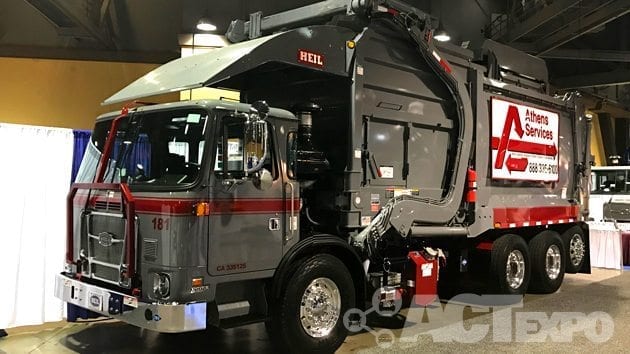Fighting smog and climate change are not mutually exclusive objectives. In fact, we can accomplish both simultaneously, while also addressing methane issues associated with landfill gas. In a few places around the U.S., this solution is already well underway: renewable natural gas (RNG) as a transportation fuel.
The most common form of RNG used today starts as biogas collected from landfills and is mostly made up of methane. The biogas is captured, cleaned and processed into RNG, which can then be used in vehicles such as trash trucks, transit buses and other natural gas vehicles. According to data from the California Air Resources Board, more than 60 percent of the natural gas vehicle fuel used in California in 2016 thus far is certified by the state as RNG.
In addition to landfills, RNG can be produced from biogas collected at municipal waste water treatment plants, animal manure, and all kinds of organic waste digesters now being built on farms and by municipal solid waste collection companies.
Producing renewable transportation fuel from methane not only displaces diesel from our transportation sector, but according to the California Air Resources Board, RNG provides the lowest “Carbon Intensity Value” of all known fuel options–including electricity from solar panels and wind turbines.
Beyond the carbon reductions of using RNG, capturing the methane that would otherwise be flared or vented into the atmosphere provides greenhouse gas reduction benefits. In fact, methane is an extremely potent greenhouse gas; it’s heat trapping capabilities are more than 25 times more powerful than CO2. By capturing waste streams of methane that are otherwise released into the atmosphere, short lived climate pollutants can be addressed.
Taking this one step further, when using this carbon-friendly RNG to replace carbon-intense diesel fuel in heavy-duty vehicles, such as on-road goods movement trucks, we are also reducing dangerous local emissions of criteria pollutants such as cancer-causing diesel particulate matter and NOx, the primary precursor to ozone. Heavy-duty vehicles are the single largest source of NOx emissions.
Today’s natural gas engines being installed in waste collection trucks and transit buses are certified by the Environmental Protection Agency as having NOx emission levels that are 90 percent lower than the most stringent emissions standards for this harmful pollutant. Further, recent emissions testing has indicated that actual in-use NOx emissions are as much as 90 percent cleaner than their actual certification level. This means that these engines have significantly lower NOx emissions than all other heavy-duty engines on the market today.
Recent research confirmed that emissions at these levels will provide an overall environmental footprint that is lower than comparable heavy-duty electric vehicles charging on a very clean electrical grid. This was recently confirmed by the California Energy Commission in a draft staff report from October 2016, which explains that when ultra-low NOx natural gas engines combined with biomethane fuel, can reduce life-cycle emissions to levels near or equal to those of zero emission electric vehicles.
The capture of harmful methane waste streams that then are used as a locally produced renewable fuel, provides the most climate-friendly approach known for on-road goods movement. Using RNG in ultra-low emission natural gas engines provides not only a win-win for our climate and ozone efforts, but provides an opportunity for local job creation, economic investment and further development of a robust and sustainable circular economy.


